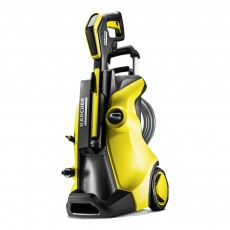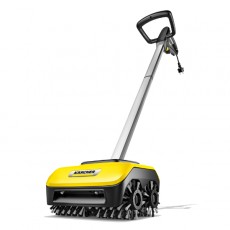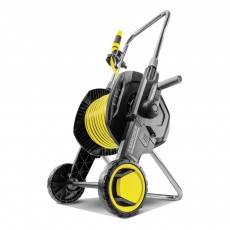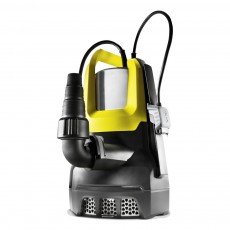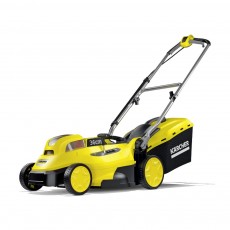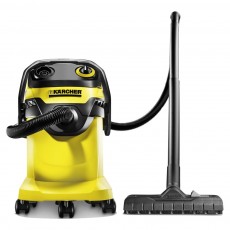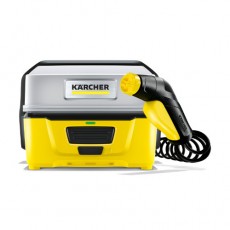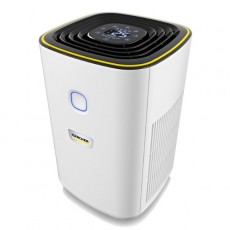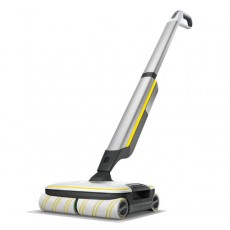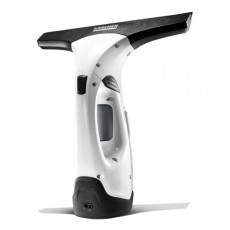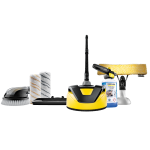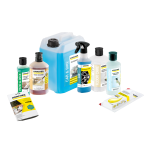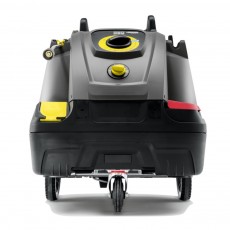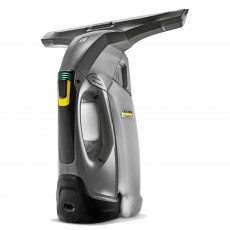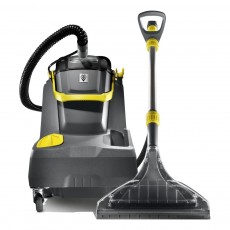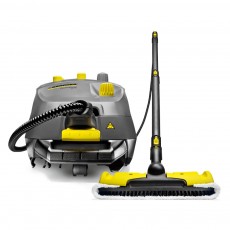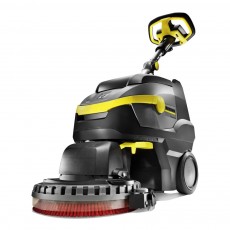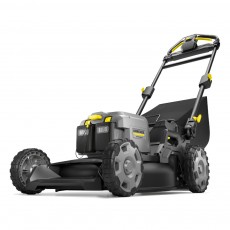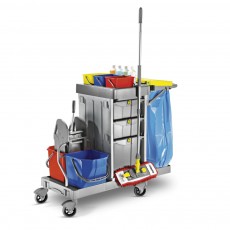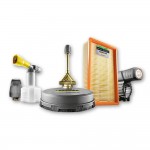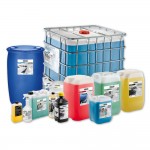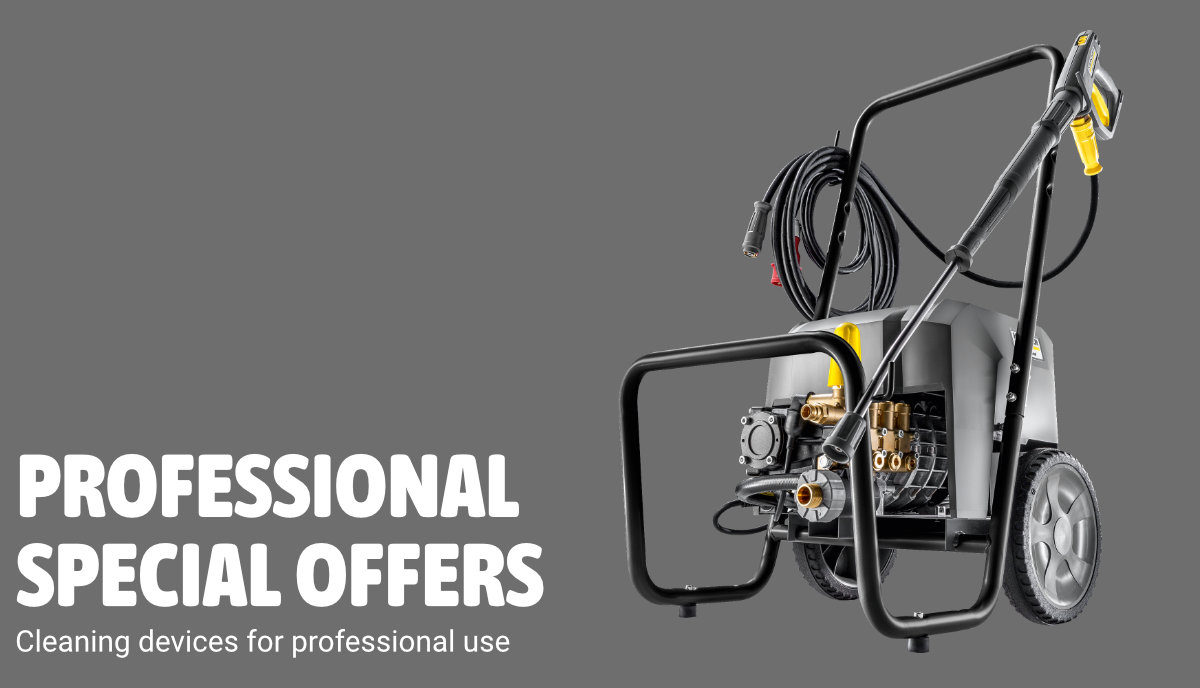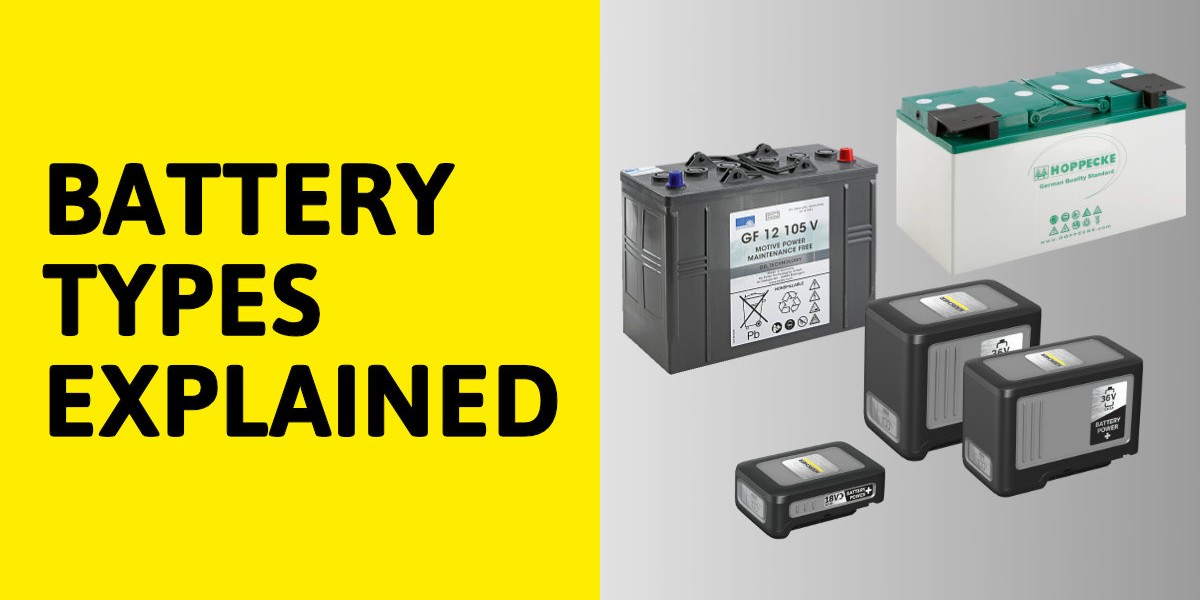
In this article we explore and explain the different battery technologies used in Karcher equipment. Read on to learn more...
Whether it's one of Karcher's largest floor cleaners or simply a Karcher Window Vacuum, an increasing number of these pieces of Karcher equipment use some form of battery to power them, and as we move towards a greener world without combustion engines, these products will become even more reliant on battery technology.
Lithium-Ion Batteries
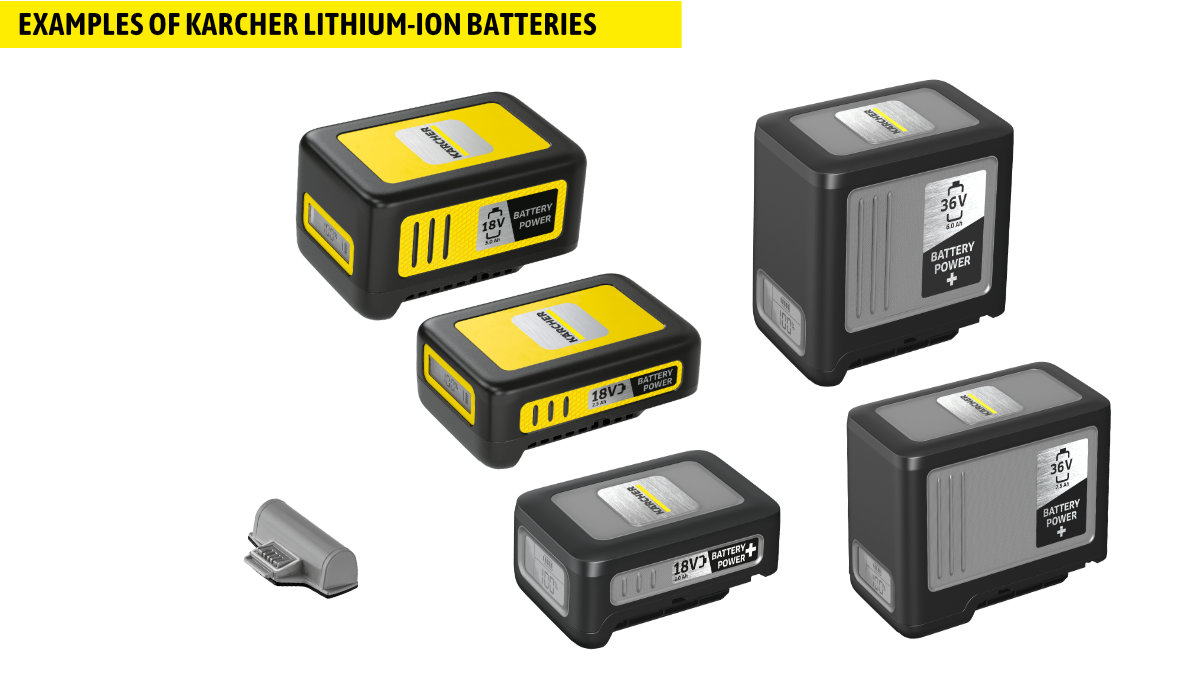
A lithium-ion battery or Li-ion battery is a type of rechargeable battery in which lithium ions move from the negative electrode through an electrolyte to the positive electrode during discharge, and then back again when charging. Li-ion batteries provide a lightweight, reasonably compact yet high energy density power source that is able to power a variety of devices from mobile phones, laptops and portable devices through to cars and even military aircraft! To power larger devices such as electric cars for example, it has been found that connecting many smaller battery packs in parallel is far more effective and efficient than connecting to a single larger battery. Examples of devices that use Lithium-Ion batteries include:
- Portable devices: which include mobile phones and smartphones, laptops and tablets, digital cameras and camcorders, electronic cigarettes, handheld game consoles and torches (flashlights)
- Power tools: Li-ion batteries are used in tools such as cordless drills, sanders, saws, and a variety of Karcher garden tools including Lawn Mowers and Hedge Trimmers, Karcher Window Vacuums, Karcher Floor Cleaners, Karcher Professional Scrubber Driers and Karcher Professional Sweepers
- Electric vehicles: Lithium-Ion batteries are used in electric cars, hybrid vehicles, electric motorcycles and scooters, electric bicycles, personal transporters and advanced electric wheelchairs. Also radio-controlled models, model aircraft, military and civil aircraft, and even the Mars Curiosity Rover!
Lithium-Ion Batteries - The Pros
Eco-friendly
Lithium-Ion batteries contain relatively low levels of toxic heavy metal elements commonly found in the other battery types. Although Li-Ion batteries are safer than other battery types they still require proper recycling, so should not be put in regular rubbish.
Lightweight & Compact
The electrodes in Lthium-Ion batteries, Lithium and Carbon, are lightweight on their own, making for much smaller and lighter counterparts than other battery types. This is a particularly desirable characteristic in handheld tools or torches for example.
High Energy Density
Lithium is a highly reactive element that is able to store large amounts of energy, this means that Lithium-Ion batteries last much longer than other rechargeable batteries whilst retaining a high level of performance
i.e., they will work at full performance up until the point there is sufficient charge left rather than experience a performance drop as charge decrease like some other battery types. They are also far quicker to charge than other battery types as a result of this higher density.
Low Maintenance
Older types of rechargeable batteries such as NiCd or NiMH used to suffer from a so called "memory effect" so that if they were repeatedly patially discharged before being recharged, the older battery types would ultimately only deliver the amount of energy used during those partial recharges before the voltage would drop. Lithium-Ion batteries don't suffer from this, which means they will always give up their last bit of power and you can recharge them whether they are fully depleted or you have only used 25% of the charge.
More Charge Cycles
Quality lithium-ion batteries last about a 1000 full charge cycles. A full charge cycle is when the battery is discharged to flat and then recharged to full, so using your battery until it’s at 75% capacity and then plugging it into recharge doesn’t constitute a full charge cycle. When your battery has recharged back to full, you can still use the 75% of the capacity that you were left with before you recharged your battery; only then has your battery gone through a full charge cycle.
Low Self-Discharge Rate
Lithium-ion batteries also have a relatively low self-discharge rate. Self-discharge is a natural, irreversible phenomenon for batteries, where chemical reactions inside the batteries reduce their capacity even when the battery is not being used. The self-discharge rate of lithium-ion batteries peaks at about 5% within the first 24 hours after charging the battery, and then tapers off to 1-2% per month. In comparison, nickel-based rechargeable batteries lose about 10-15% of their capacity after charge and another 10-15% per month.
Lithium-Ion Batteries - The Cons
Less Robust
Lithium ion cells and batteries are not as robust as some other rechargeable technologies. They require protection from being over charged and discharged too far. In addition to this, they need to have the current maintained within safe limits. Accordingly one lithium ion battery disadvantage is that they require protection circuitry incorporated to ensure they are kept within their safe operating limits.
Ageing
One of the major lithium ion battery disadvantages for consumer electronics is that lithium ion batteries suffer from ageing. Not only is this time or calendar dependent, but it is also dependent upon the number of charge discharge cycles that the battery has undergone. Often batteries will only be able to withstand 500 - 1000 charge discharge cycles before their capacity falls
Cost
A major lithium ion battery disadvantage is their cost. Typically they are around 40% more costly to manufacture than Nickel cadmium cells. This results in a higher cost for products that use this type of battery.
Developing Technology
Although lithium ion batteries have been available for many years, it can still be considered an immature technology by some as it is very much a developing area. This can be a disadvantage in terms of the fact that the technology does not remain constant. However as new lithium ion technologies are being developed all the time, it can also be an advantage as better solutions are coming available.
AGM - Absorbent Glass Mat Batteries
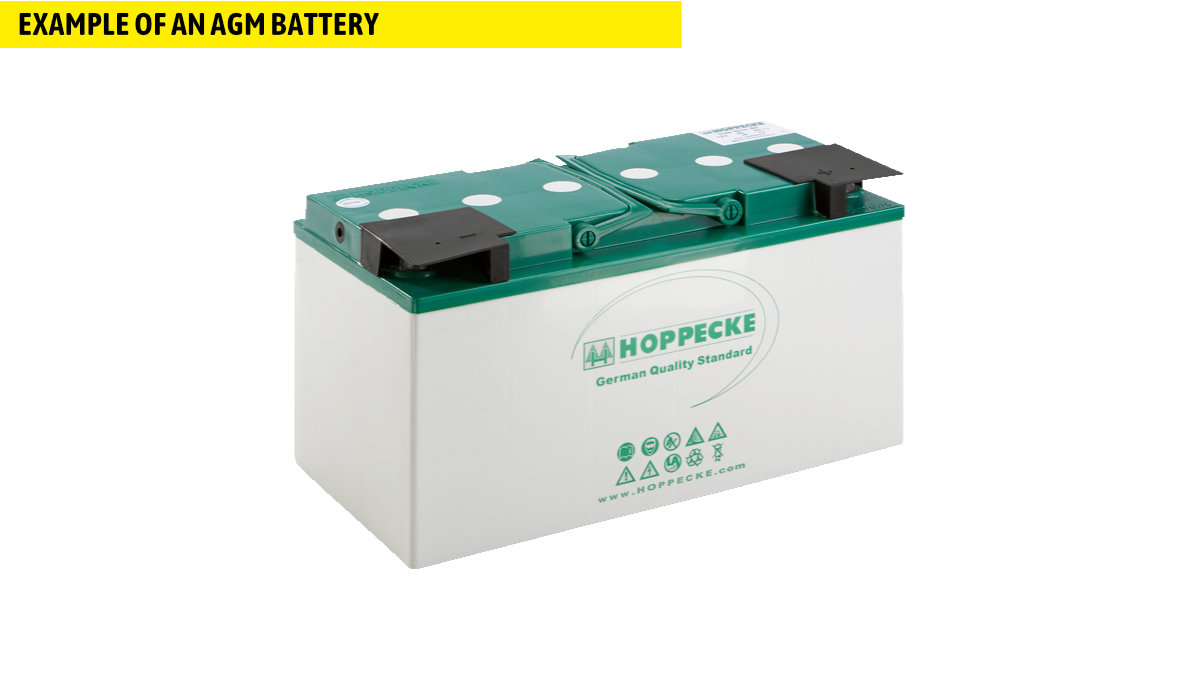
Absorbent glass mat batteries (AGM) have been a market favorite for the past few decades. At the time, they were designed to be a viable alternative to the Ni-Cad batteries, which were very costly. Though they were mainly used in military vehicles as a source of back up power and heavy vehicles such as long-distance trucks, nowadays, they have more diversified uses. In principle, the AGM batteries work like any other lead battery. However, the AGM batteries, compared to flooded batteries, have several significant improvements that make them more efficient. We recommend that AGM Battery options are chosen when your business operates split shifts, where cleaning equipment may have to be recharged multiple times over the course of the day as shifts change.
- Cars: AGM batteries have replaced flooded batteries in some modern car batteries
- Electric Vehicles: AGM batteries are often used in electric wheelchairs or mobility scooters
- Cleaning Equipment: AGM batteries can be used in battery powered cleaning equipment such as Karcher Professional Scrubber Driers or Sweepeers
AGM Batteries - The Pros
Maintenance Free
Because the AGM Cell Batteries are comprised of a Glass Fibre Mat that holds the electrolyte instead of free-flowing liquid electrolyte, there is little to no maintenance to keep the battery working properly. Also, Oxygen produced on the positive plate is actually absorbed by the negative plate, so instead of producing hydrogen as a Flooded Cell Battery does, the negative plate actually produces water, thus maintaining the water level in the battery
Spill Proof
Unlike the traditional lead-acid batteries that freely flood their electrodes, AGM batteries have absorbent glass mats that prevent this. Additionally, it is the function of these glass mats to avoid spillage. Rather than absorbing the electrolyte, the glass mats work by holding the electrolyte in place, preventing it from spilling over, even when the battery is placed in odd positions.
High-Power Output
Because of the way that they are designed, the AGM batteries have minimal internal resistance. This, therefore, enables them to provide sufficient bursts of power when necessary, such as when one needs to start a battery. Due to this feature, these batteries respond better to loading than any other battery on the market.
Shorter Charging Time
AGM batteries, compared to flooded batteries, charge quickly. When compared to flooded batteries of a similar capacity, the charging rate can reach five times faster with the same power source.
Longer Lifespan
AGM batteries have a longer lifespan than traditional flooded batteries. Moreover, not only do they serve for a more extended period when they perform the same tasks, but they also last longer when they are not in active use. This is because self-discharging is minimized in these batteries, unlike other types of batteries, which is a huge problem. This ensures that one does not have to keep charging them after an extended period of inactivity.
Durable
AGM batteries were originally designed to serve the aircraft industry. This means that they have a sturdy design, one that can handle conditions of intense vibrations, just like those in military and commercial aircraft. Because of this property, they are a favorite for high-end motorcycle riders and race car drivers. The sandwich construction method adopted in their design ensures that their internal components do not fall apart. Moreover, they are invulnerable to the subsequent wear and tear that may result from frequent and continuous vibrations. Furthermore, they can withstand extreme temperature variations.
Unlikely To Build Up Sulphation
Sulfation is the property of lead-acid batteries, where there is a gradual accumulation of lead sulphate crystals in the cells. In most cases, it is the cause of failure in lead-acid batteries. Sulphation mostly occurs when the battery is not fully charged and discharged (spot-charging), and thus the crystals continuously build up on the plates. When this process goes out of hand, it prevents the efficient conversion of chemical to electrical energy. Therefore, for other types of lead-acid batteries, it is essential to let them deplete fully before re-charging them to prevent sulphation. However, in AGM batteries, whilst it does occur, it is significantly reduced.
AGM Batteries - The Cons
High Production Costs
Unlike cheaper flooded batteries, AGM batteries have a higher production and manufacturing cost. However, they are still cheaper to produce than Gel type batteries. Even though the cost of manufacturing these batteries has reduced since their introduction into the market in the 80s, it is still generally higher when compared to older battery types in the market. This, therefore, make them slightly more expensive for use in some machines.
Energy Issues
While AGM batteries have a high-power output, they have a low specific energy. Generally, it is a necessity for batteries that are required to run for a long time under a moderate load to gain a high specific load. This means that these batteries cannot be used on several devices.
Reduced Capacity Over Time
Though AGM batteries keep a charge for a longer time than other batteries, they gradually reduce their charging capacity over time. This is unlike gel batteries that have an advantage in this sector because of their excellent performance curves.
Sensitive To Overcharging
These AGM batteries, compared to flooded batteries, have a low tolerance to overcharging and high voltages. If they are subjected to these conditions, it shortens their life span. This means that you must always use the correct charger for the battery.
Flooded or "Wet" Cell Batteries
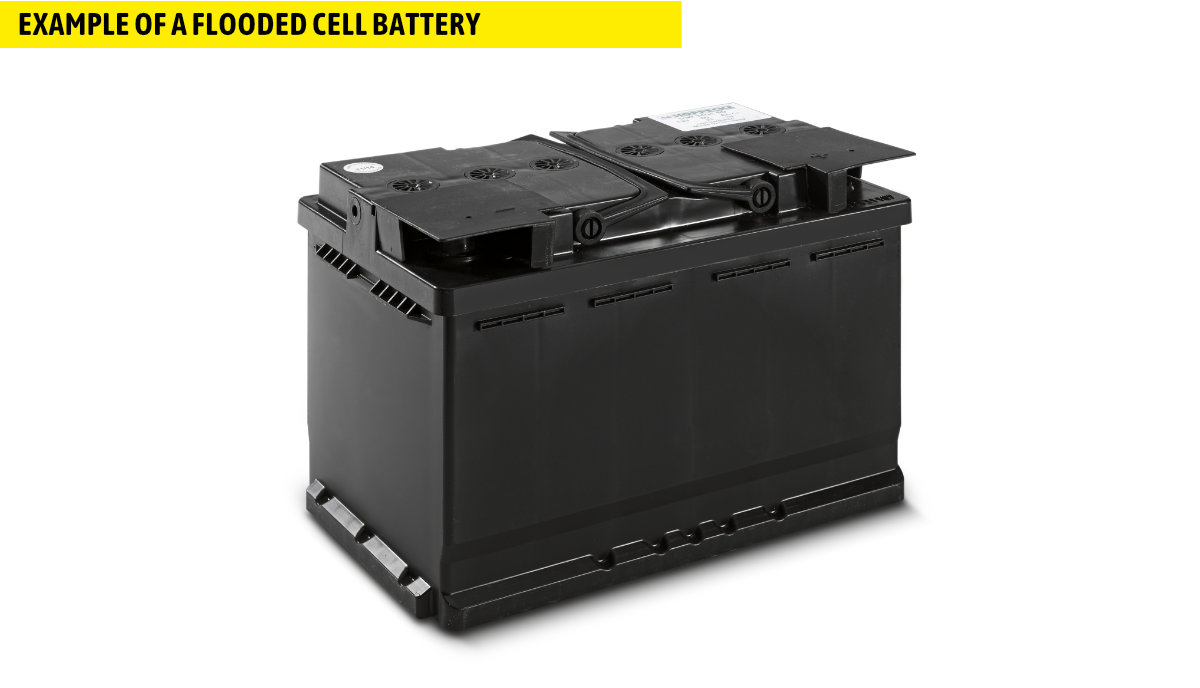
These are the traditional type of lead-acid batteries that were first used in applications that required a battery. They work by using lead plates that are surrounded by a sulphuric acid electrolyte solution. There are plate separators, but they only separate, as the fluid is free to move about the plates. Unlike AGM and other types of batteries, flood batteries are not sealed. They do not recombine the gas produced into a liquid. Instead, the gas vents out externally. Because of this there are open vents that allow for internal gas and fluid to flow out, which means everything can escape through the vents. This includes condensation, steam, and acid. Because of this, you’ll need to clean the outside of the battery around the vents. Care should be taken however as the acid is extremely harmful. Flooded batteries do require regular maintenance, so it is necessary to add de-ionised (distilled) water regularly to replenish the lost electrolytes in this type of battery. Whilst this type of battery is still used in some pieces of cleaning equipment, Karcher now make more use of AGM and Gel battery types as they are considered safer. You should also not use Flooded or "Wet" batteries around a swimming pool.
- Cars & Vehicles: Flooded Batteries are commonly used in older cars, vans and lorries.
- Electric Vehicles: Flooded Batteries are often used golf carts
- Cleaning Equipment & Fork-Lift Trucks: Flooded Batteries can be used in battery powered Fork-Lift Trucks or cleaning equipment such as Karcher Professional Scrubber Driers or Sweepeers
Flooded "Wet" Cell Batteries - The Pros
Reliable
Providing they are well maintained Flooded Cell Batteries are very reliable
Versatile And Compatible
As Flooded Cell Batteries are the most common battery on the market, they come in the widest variety of shapes and sizes. This makes them ideal for fitting into a wide range of applications that may not be able to accomodate the other battery types.
Impressive Charge Rates
Of all the battery types on the market, Flooded Cell Batteries have impressive charge rates for their price. So if you’re looking for an affordable, well-performing battery, then they represent very good value for money.
Flooded "Wet" Cell Batteries - The Cons
Regular Maintenance Is Required
Flooded Cell Batteries require regular maintenance because the lead plates deteriorate when they come into contact with the atmosphere. So as the battery works, the fluid level inside drops inside and the plates become exposed to air. When exposed to air, the plates begin to deteriorate. Once this happens, the Flooded Cell Battery will corrode and fail. A new Flooded Cell Battery will then be required if this is allowed to happen.
Susceptible To Environmental Conditions
Because Flooded Cell Batteries are vented, they are more susceptible to the environment they are stored in. Extreme climatic changes like frosts can cause the water in the batteries to freeze or in high temperature environments it can cause the water to evaporate faster. This will increase the need for maintenance and shorten the useful life of a Flooded Cell Battery.
Weak Internal Construction
The design of Flooded Cell Batteries means that they have the weakest internal construction of all battery types on the market. They also have very high internal resistance statistics, making them the least efficient of the Battery types.
Hazardous To The Environment
Finally, there is no getting around the fact that Flooded Cell Batteries have the potential to create a very hazardous environment. It is neccessary that equipment containing Flooded Cell Batteries are charged in well-ventilated locations so that there isn’t a buildup of hydrogen gas in confined areas.
Less Tolerant Charging
When using a Flooded Cell Battery it’s vitally important that you don’t allow the battery to discharge too much. Otherwise, it may never be able to recharge and may be impossible to recover.
Gel Cell Batteries
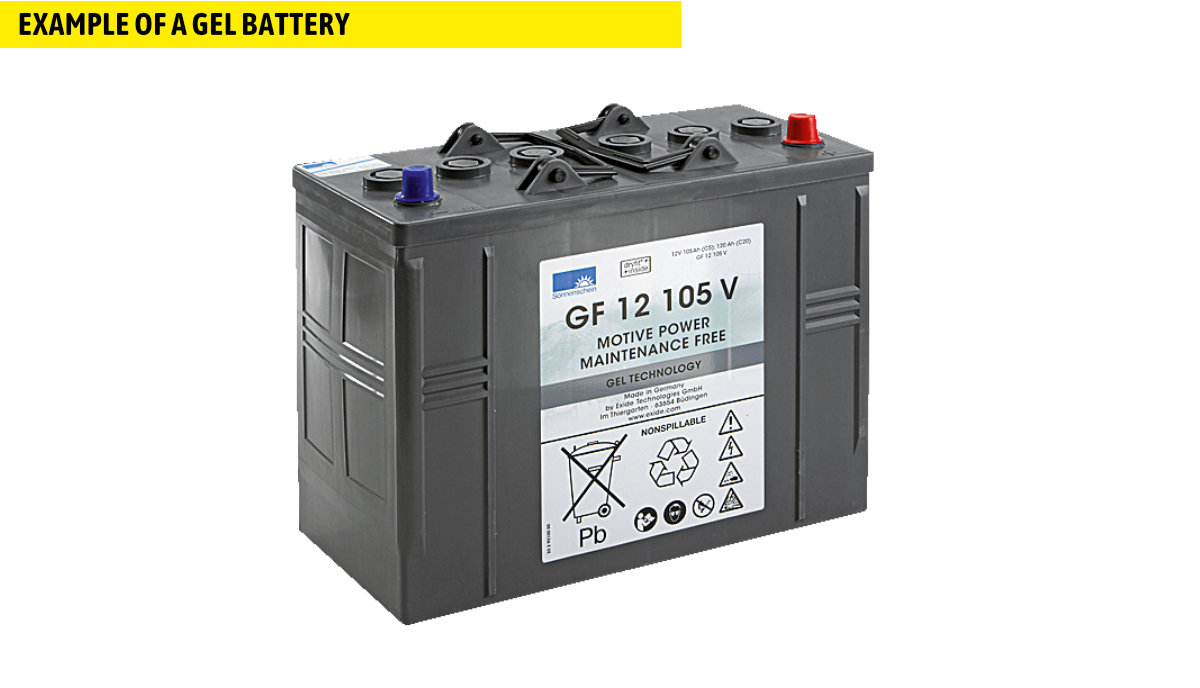
A Gel Cell Battery is a type lead-acid battery that is valve regulated. When the electrolyte is mixed with sulphuric acid and silica, it becomes a relatively stationary gel substance. This gel mixture allows the battery to utilize the acid and electrolyte in the same way it would with a traditional Flooded Cell Battery, but without the added maintenance that is required on a Flooded Cell Battery. This thickening of the electrolyte means that Gel Cell Batteries can be installed in a variety of positions and don’t emit as many fumes compared to a Flooded Cell Battery.
- Cars & Vehicles: Gell Cell Batteries are commonly used in newer cars, vans and lorries.
- Electric Vehicles: Gel Cells can be used in mobility scooters, golf carts and other small electric vehicles
- Cleaning Equipment & Fork-Lift Trucks: Gel Cell batteries can be used in battery powered Fork-Lift Trucks or cleaning equipment such as Karcher Professional Scrubber Driers or Sweepeers
Gel Cell Batteries - The Pros
Maintenance Free
Because the Gel Cell Batteries are comprised of a gel electrolyte instead of liquid electrolyte, there is little to no maintenance to keep the battery working properly. Also, Oxygen produced on the positive plate is actually absorbed by the negative plate, so instead of producing hydrogen as a Flooded Cell Battery does, the negative plate actually produces water, thus maintaining the water level in the battery
No Leaks
Even though Flooded Cell Batteries are sealed in a plastic casing there is still a chance that it will leak. Gel batteries are also sealed but with a valve that removes excess pressure. This means that between the gel substance and the removal of pressure, there is nowhere for the mixture to go.
Flexible Installation
Gel batteries have the advantage of being able to be used in virtually any position, because they don’t leak and are generally maintenance free. This greatly increases the number of applications gel batteries can be used for.
Minimal Risk
When damage occurs to a traditional lead-acid battery you are faced with a massive and dangerous clean up (not to mention the impact on anything the battery acid may come into contact with during the process). Gel batteries will not leak out if the casing becomes damaged, so there is a reduced risk of harm coming to the equipment and clean up hazards.
Vibration Resitant
One of the biggest complaints with Flooded Cell Batteries is that they are very susceptible to extreme vibration and other impacts. Gel batteries absorb impacts and vibrations, making them great batteries for items rough terrain or environments.
Emission Free
Because these Gel Cell Batteries are comprised of a gel substance there are minimal fumes created as a result of use. This means that there is a reduced need for ventilation which increases the potential applications gel batteries can be used for, as well as making them easier to charge virtually anywhere.
More Tolerant Charging
When using a Flooded Cell Battery it’s vitally important that you don’t allow the battery to discharge too much. Otherwise, it will never recharge. Gel Cell Batteries don't operate in this way, as they are deep cycle batteries which means that they able to discharge more and still be recharged like new.
Gel Cell Batteries - The Pros
Price
While the benefits of a gel battery are pretty hefty, so is the price tag. Many people looking to switch from wet cell to gel batteries see this as the biggest drawback.
Charging
When charging a Gel Cell Battery, it will require longer charging times. Slow charging cycles are pretty common with Gel Cell Batteries, but it can't be left to charge incorrectly. Because it’s a Gel instead of a liquid you’ll need to ensure that the equipment using it is set up correctly so that the charger knows when to stop charging or you need to take it off the charger as soon as it’s complete. To leave it on could cause voids to appear within the electrolyte Gel which is irreversible damage.
Weak Internal Construction
The design of Flooded Cell Batteries means that they have the weakest internal construction of all battery types on the market. They also have very high internal resistance statistics, making them the least efficient of the Battery types.
Susceptible to extremes of heat
This is really a drawback with virtually all of the Battery types in this article and Gel Cell Batteries are no exception. Heat is one of the fastest ways to cut the lifespan of a Gel Cell Battery short, as hot temperatures can adversely affect the Gel Electrolyte, turning it hard so that it shrinka away from plates. By controlling a Gel Cell Battery's exposure to heat, you can lengthen the life cycle and keep the battery running like new.

